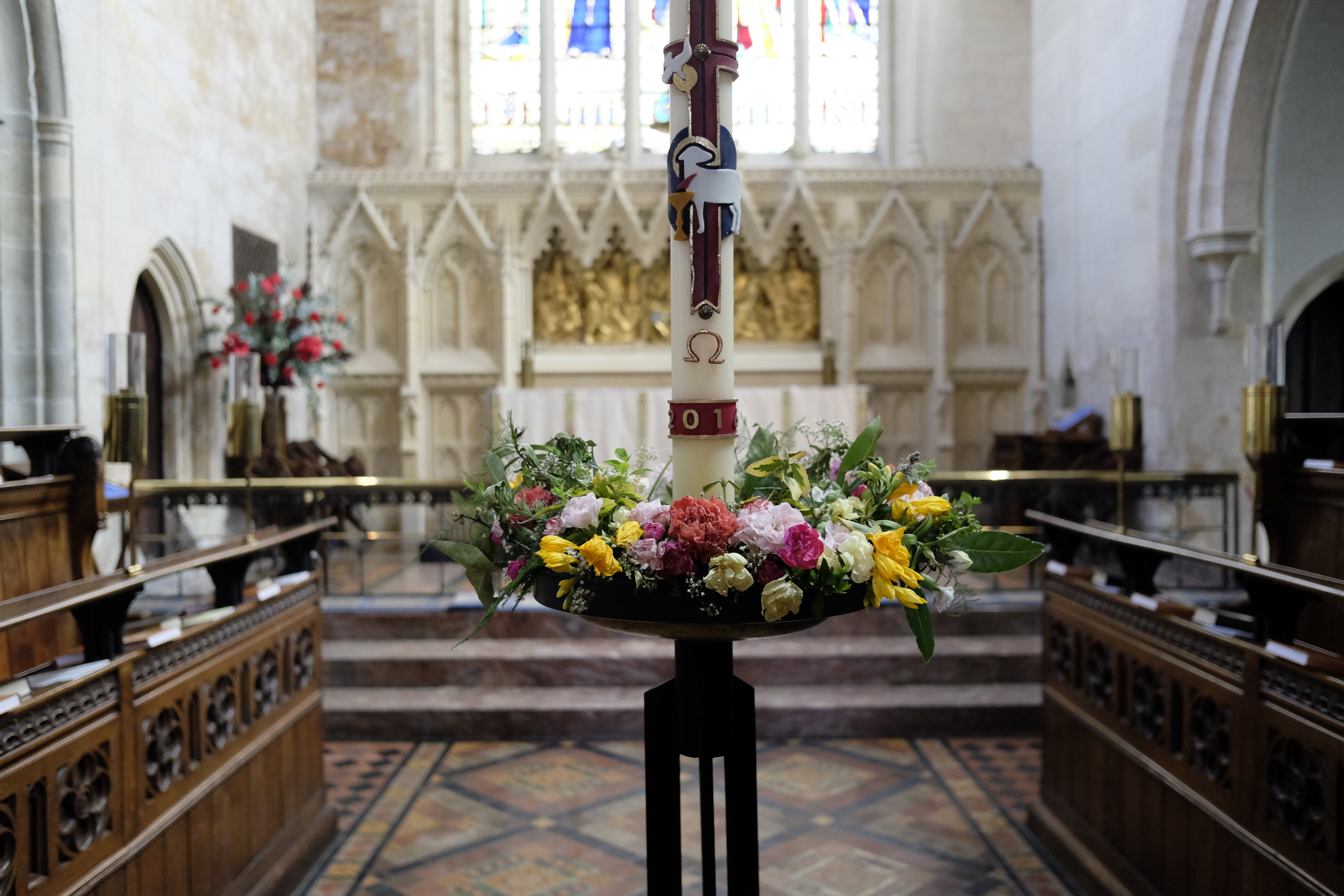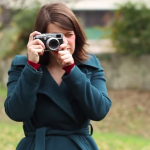Fujifilm X70 review
A cheap-ish compact camera with hipster appeal
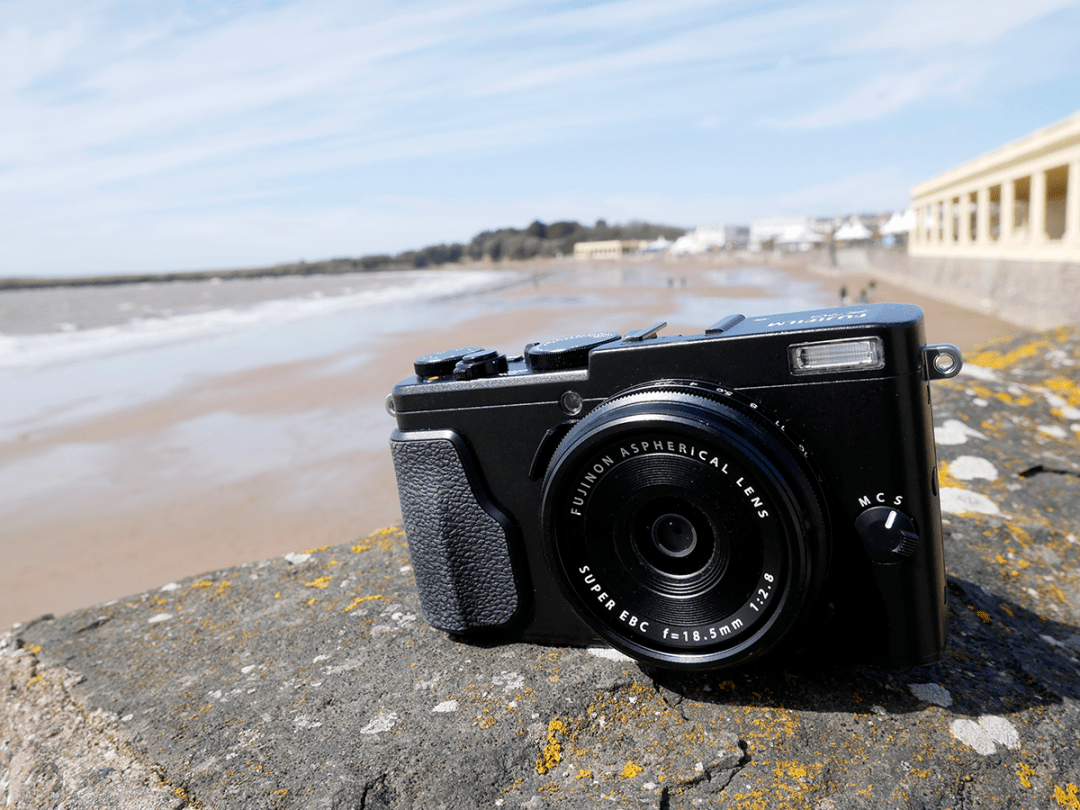
Over the past few years Fujifilm has successfully carved itself out a gorgeous, retro niche in the camera market.
This started with the X100 that had plenty of old school charm to lure in the hipsters, but matched this with the kind of ASP-C sensor image quality that’s akin to several full-frame cameras.
Since then, there have been three iterations of the X100, all costing around the £700 mark. And while the cheaper X30 is pretty enough, it also has a more modest 2/3-inch sensor. So up until now we had a bit of a Goldilocks situation, with nothing “just right” for the budget-conscious camera fanatic.
Thank heavens then for the Fuji X70. This snapper cleverly squeezes the best bits of the X100T series into a smaller and, crucially, cheaper body. How could we possibly resist its charms?
Big brain, small body
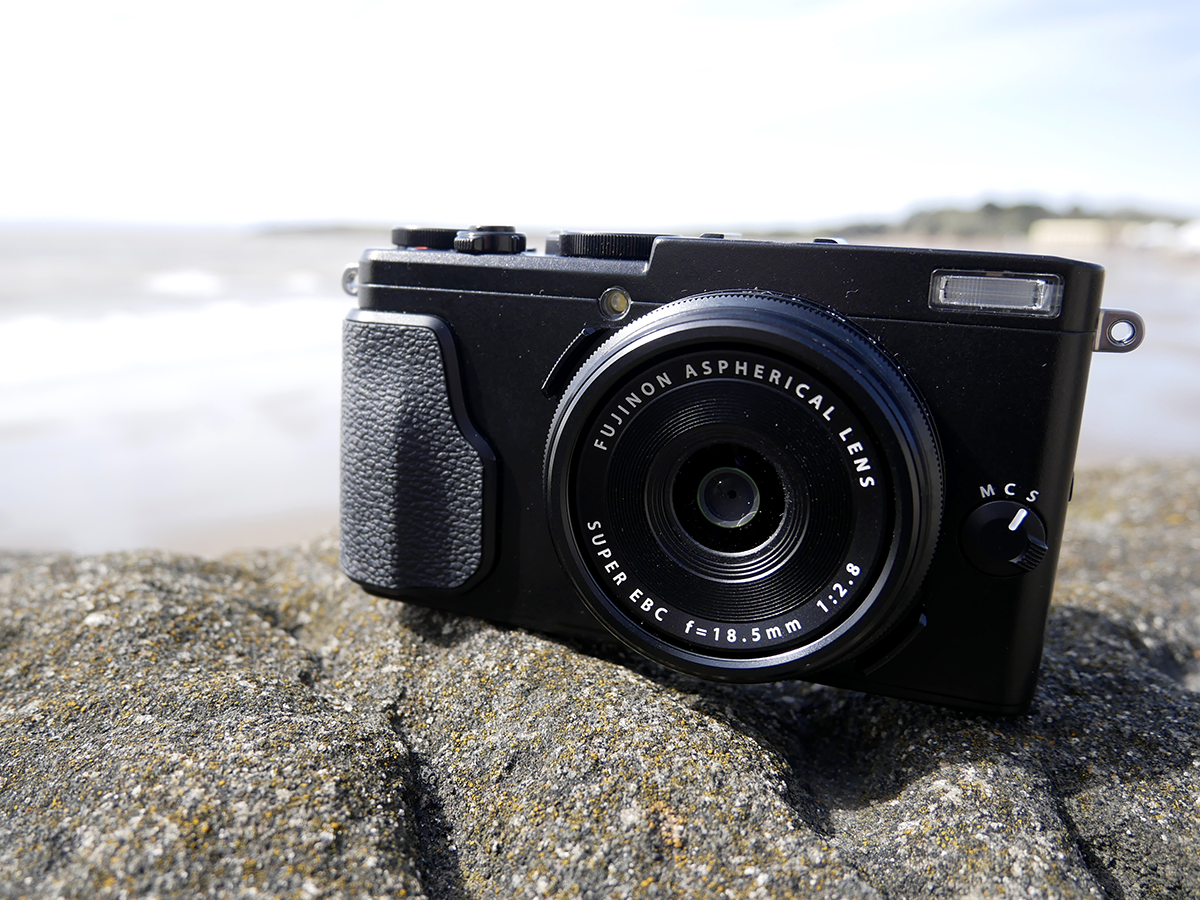
Fujifilm has really hit onto a winning formula with the X range, and despite the cut-down price tag, there’s still a beautiful piece of tech on offer here with the X70.
Inside is the same 16.3MP APS-C format X-Trans CMOS II sensor and EXR Processor II as the X100T. That’s excellent news for image quality as we already know that this combination is more than capable. While the X100T has a 35mm (equivalent) lens, the X70 goes a little wider with an 18.5mm lens which equates to 28mm equivalent.
Just like the X100T, you can’t zoom – not optically at least anyway, so you better learn to use your feet. Some folk will love 28mm, others won’t – such is life.
The overall body size of the X70 makes it much more likely you’ll be able to squeeze this camera into a trouser pocket than the X100T. Unless your skinny jeans leave very little to the imagination, of course.
Pocket wonder › Sony RX100 IV review
Wheeler dealer
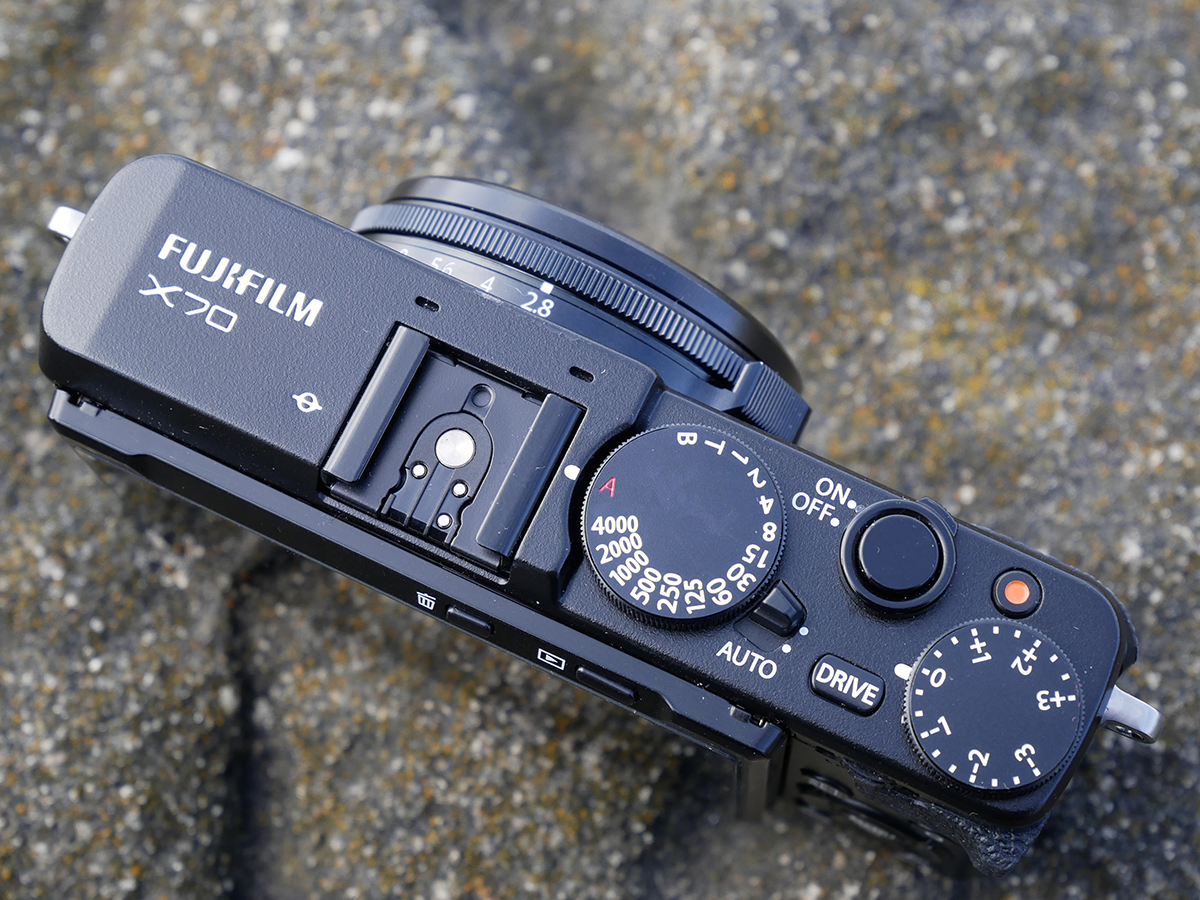
What makes this camera (and other X series models) stand out from others on the market is direct access control dials and wheels, which give the impression you mean photographic business – even if you never actually end up using them.
Around the impressively flat lens you’ll find two rings. First of all there’s an aperture ring, and just in front of it is a control dial that can be set to adjust a variety of different settings.
On the top of the camera are shutter speed and exposure compensation dials too. But don’t worry newbies, everything can still be set to A for automatic. That gives you semi-automatic control – there’s even a switch to flick on to full auto and let the camera do all the thinking for you.
Magic touch
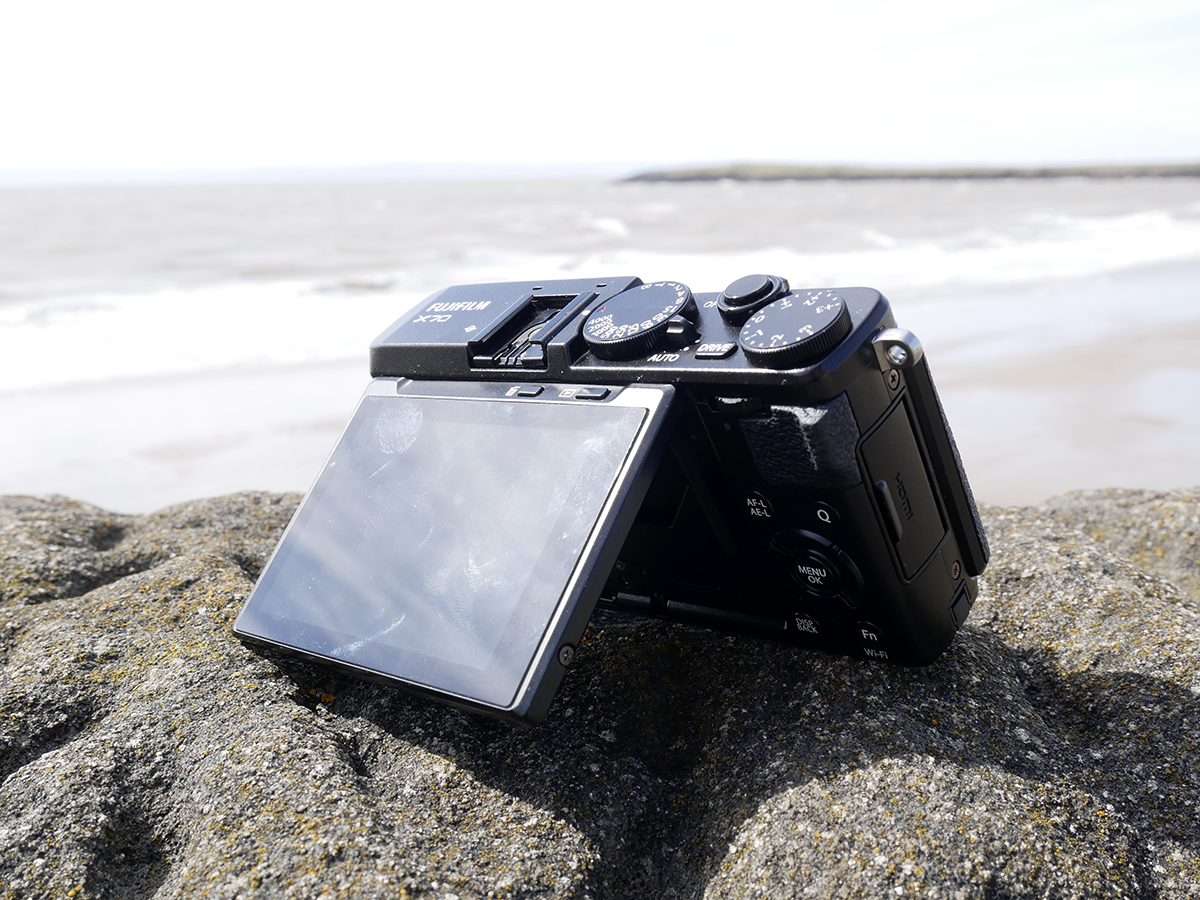
So the X70 gives you a lot of control over your photos without being a faff to use. Flip to the back of the camera and there’s a tilting screen that tilts downwards, upwards and all the way to the front – that’s right, you can get your precious selfies.
In a first for Fuji X series, the company has finally embraced touch-sensitive technology, so you can set the autofocus point with a digit rather than messing about with buttons (though you can do that as well if you really want). You can also use it to flip through images in playback, but for some reason, you can’t use it to change other settings like in the quick menu. Which is a shame.
Speaking of the quick menu, it, along with a good majority of the X70’s buttons, can be customised to feature exactly the settings you use regularly and ditch those that you don’t. Nifty.
4K compact › Panasonic Lumix LX100 review
Pair of shutters
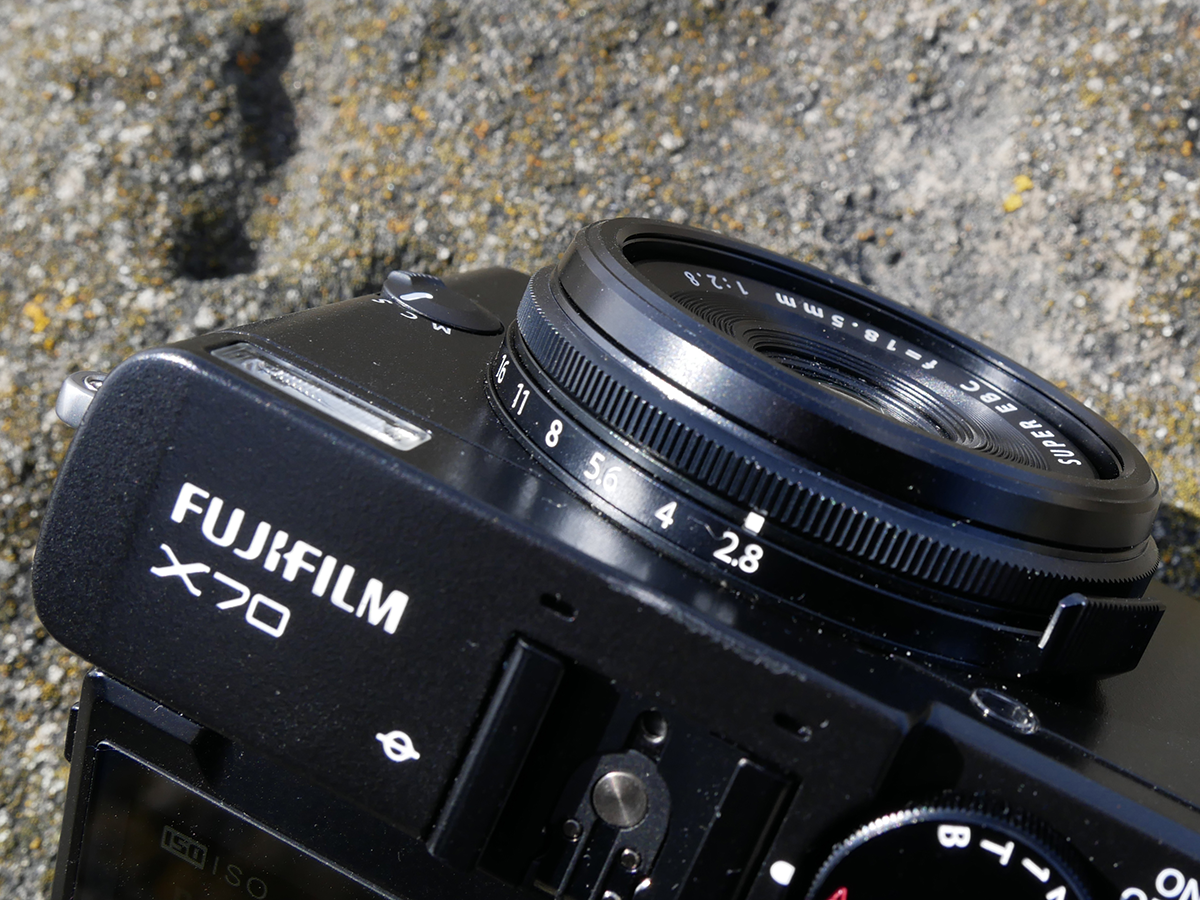
Additionally, the X70 has both an electronic and a mechanical shutter. So you can shoot silently if you’re photographing wildlife and don’t want to frighten off any furry friends you might be eyeing up.
More significantly, you can also use very fast shutter speeds beyond the 1/4000 second the mechanical shutter provides. Why? Basically, if you’re shooting at a wide aperture of f/2.8 to create a lovely shallow depth of field effect, you’ll need a fast shutter speed if you’re photographing in bright light to avoid overexposing your images. Fast shutter speeds are also great for freezing speedy sports action.
No point of view
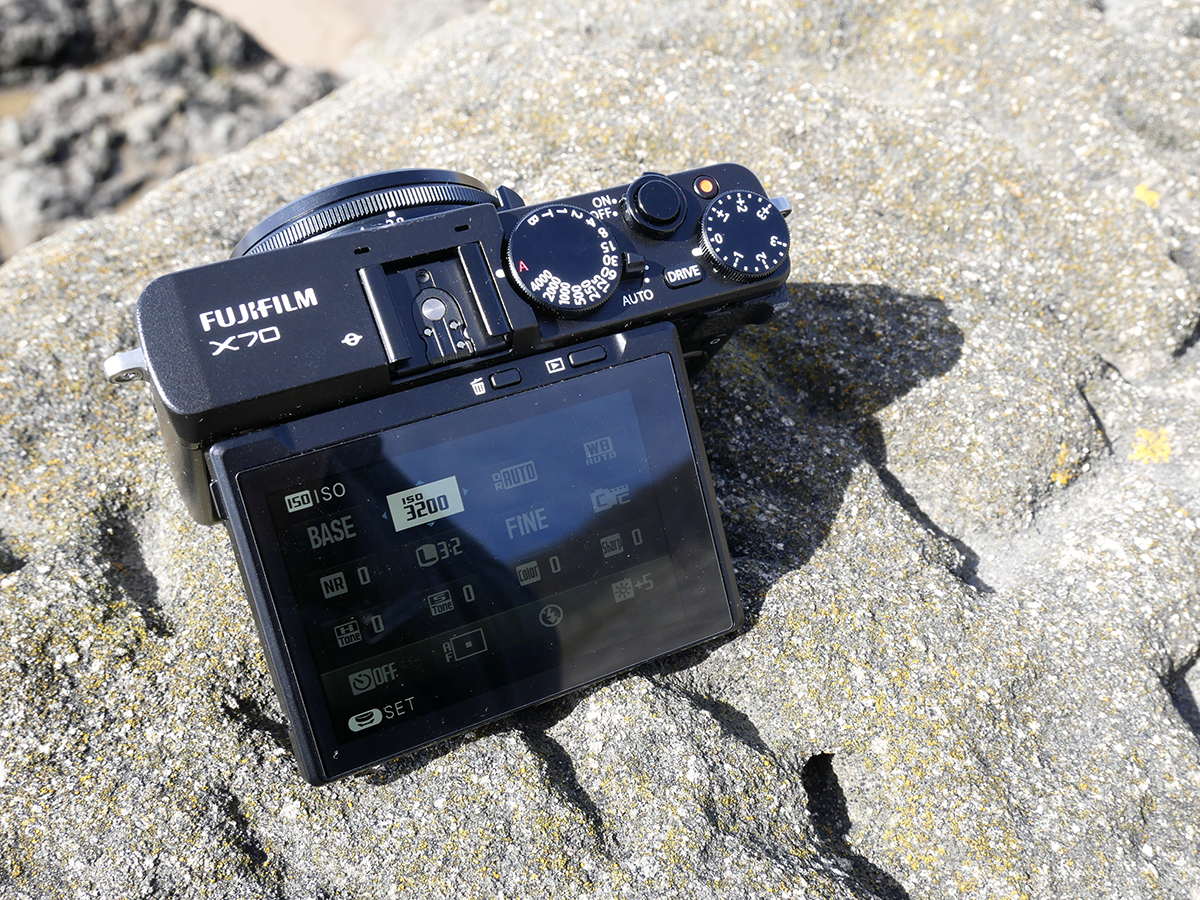
Of course, at a cheaper price than the X100T, there has to be some sort of trade-off. That comes in the shape of not having a viewfinder. Many photographers will miss it; others who have come of age in the smartphone era may be less bothered. If you’re in the former camp, you can buy an optional optical viewfinder to slot in the hotshoe.
It’s worth activating the electronic level (in display settings) if you have a tendency to be take photos on the wonk (technical term) when snapping landscapes – it saves faff in Instagram levelling out your photos, if nothing else.
Uploading said shots to Instagram is easy as pie with the inbuilt Wi-Fi. As default, the Fn button on the bottom right hand corner of the X70 activates the Wi-Fi. You simply connect to the network it creates, launch the (free) Fujifilm app and away you go. You can also control the camera remotely should you wish to take a group (or single, it’s OK) portrait from afar.
Cheap as chips › Nikon S9700 review
Bring it to light
So what are the X70’s photos actually like? Well, the X70 copes well with mixed and artificial lighting sources, not getting thrown off too badly by fluorescent lighting. Similarly, the camera’s all-purpose metering system produces accurate exposures in the majority of conditions.
Focusing is solid too, with near instant lock-on in full bright light situations. It hunts about a little more in low-light conditions, but it nearly always gets there unless you’re into shooting in pitch-black caverns (we’re not really sure why you would be).
Getting images up and running on our computer confirms that the X70 is up to the task of producing the same kind of cracking images we’ve come to know and love.
